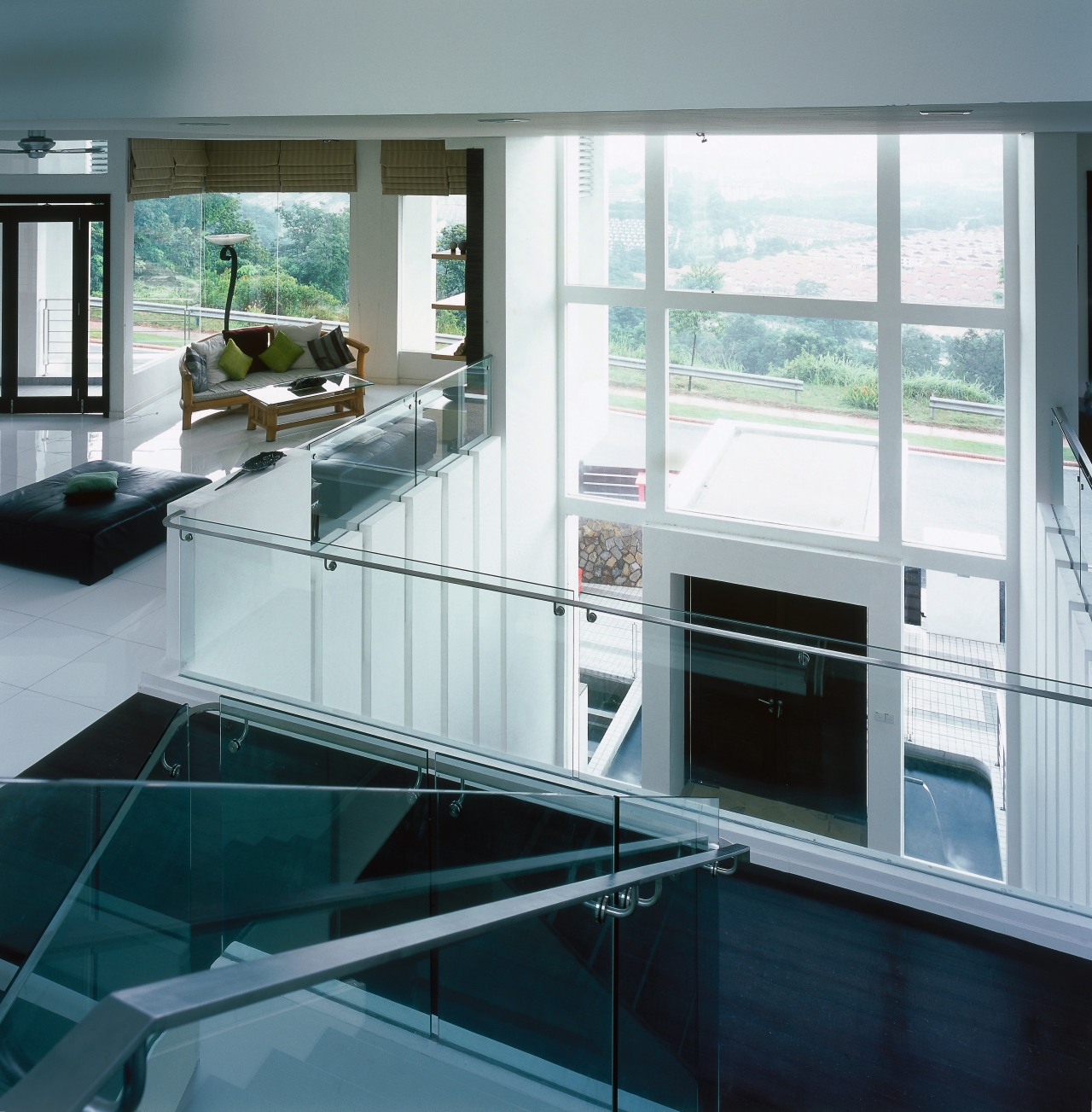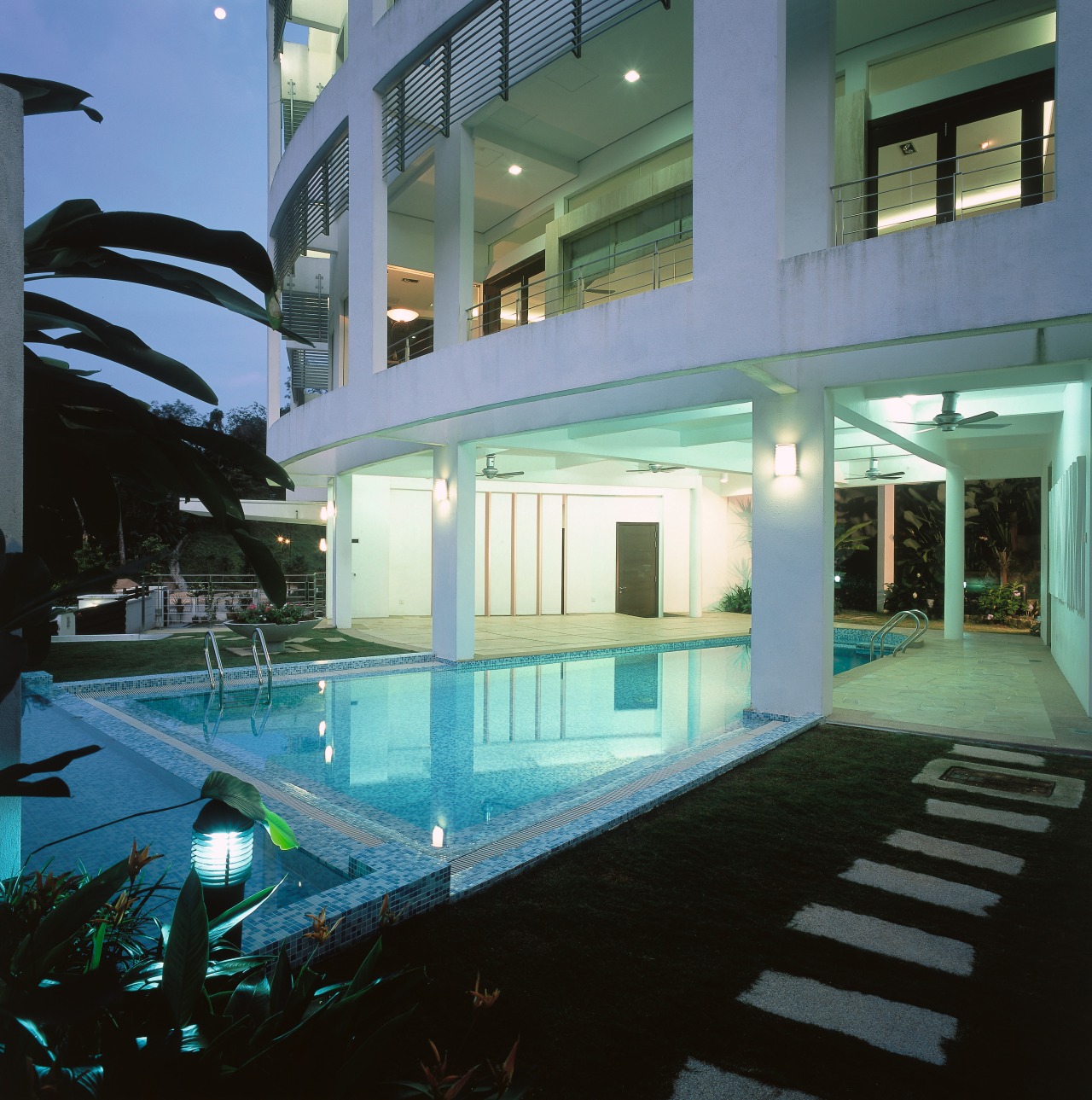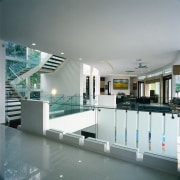Elevated status
A sweeping double facade on this contemporary residence calls to mind the aesthetics and advantages of traditional Malaysian-style homes
When looking to create comfortable, contemporary residences it pays to keep a careful eye on the past. A thoroughly modern home can still make good use of traditional architectural features that have been tried and tested in the same climate for hundreds of years.
This residence, by architect Kun Lim, uses two design elements more often associated with classic Malaysian kampong village homes. First, a double facade provides sun shelter for the interior from shutters positioned on the glassless outer face much like the covered and fringed verandas of local village houses. Second, the home is partially set on stilts another kampong-house feature with a swimming pool tucked partly underneath. This introduces cross ventilation beneath the residence, an age-old form of air conditioning.
The stilts and outer facade were also design responses to a constricted site, says Lim.
"The house could only extend to within six metres of the edge of the property due to council constraints, but the outer facade allowed us to increase the apparent size of the house without breaking any bylaws," he says. "Similarly, space constraints meant the only place to easily locate the pool was partly under the house, which was another reason to raise the building on stilts. This has the added advantage of allowing breezes to blow across the surface of the cold pool water before flowing into the home's interior."
The design of the house is also a response to space allocation in other ways. In the spirit of sustainable development, the sloping corner site was embraced rather than excavated, which kept the need for earth cutting to a minimum. Essentially the house is dug into the hill on one side and supported by stilts on the other, enabling the architect to create vast uninterrupted open-plan living spaces.

Lim says that from the outside, the eight-bedroom home is intentionally difficult to read. One could be forgiven for guessing the wrong number of floors in the home, depending on which angle it is viewed from. The second skin and the breakdown of the design into various wings and terraces all have functional applications but also create visual rhythms and interest that break up the impact of the massive curving facade. The plethora of openings and terraces is another feature often associated with traditional Malaysian homes.
Another cultural tradition on a more human level is addressed in this home. The concept of extended families is as ancient as the architecture of a kampong house, and this is literally built into the design.
"One of the client's main requests was for a home that could comfortably accommodate his extended family," says Lim. "Private spaces were required for different family groups, but the client also wanted to maximise communal space as well for example, he wanted the greater family to be able to enjoy meals together."
The interior layout creates degrees of separation and private family spaces. The owner lives in the right-hand wing of the home at ground floor level, which has its own private terrace; one of his sons and his family live in the left wing on the level above, while the second son's family occupies the other side of this top level.
As well as the private family areas, the design provides expanses of open-plan living areas at the heart of the home that are intended to be shared by all.

"We created a double-volume entrance rising up from the basement level through the heart of the expansive ground-floor open-plan living area," says Lim. "This creates a spectacular sense of arrival, heightened by a glass floor with fish swimming literally underfoot. The entry aids the circulation of air up through the interior and creates a physical, if not visual, demarcation between the living and dining areas on the next level up."
A visitor climbing the stairs from the pool-side entrance emerges in the public ground floor space. While the void ends at the ceiling on this level, the stairs climb on to the uppermost level of the home.
To provide a harmonious interior, the architect specified pale tones. The use of whitewashed walls, white columns, glass and stainless steel create a modern, unifying personality that extends right through the interior. The clean, neutral look complements the plaster finishes and stainless steel shutters found on the exterior of the home.
"Materials were chosen partly for utility or ease of upkeep, and partly for economic reasons," says Lim. "The most luxurious commodity in this upmarket residence is its cool, airy disposition and sheer volumes of uninterrupted space."
Credit list
Interior designer
Kitchen design
Door
Blinds
Roofing
Flooring
Paints and varnishes
Heating system
Audio Visual
Kitchen cabinetry
Sink, cooktop and ventilation
disposal
Bathroom vanity
Bathroom flooring
Bathroom ventilation
Pool
Main contractor
Kitchen manufacturer
Cladding
Tiling
Wallcoverings
Lighting
Furniture
Television
Benchtops
Taps
Refrigeration
Hot water systems
Wall finish
Bathroom lighting
Story by: Trendsideas
Photography by: KL Ng Elevated status A sweeping double facade on this contemporary residence calls to mind
Home kitchen bathroom commercial design
At one with the Amazon
Contrast and connection
Simplified seclusion














